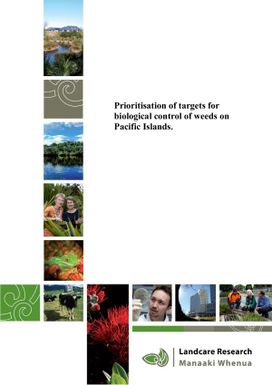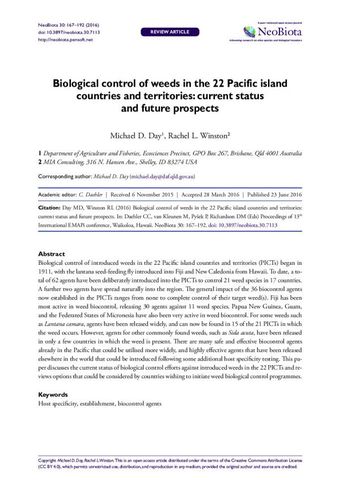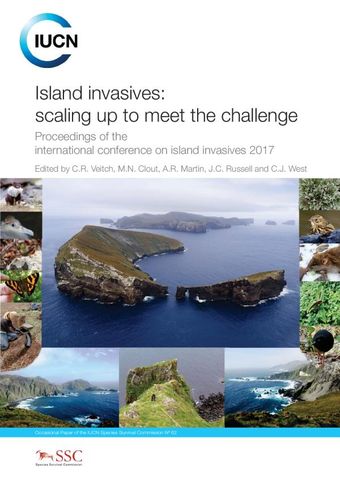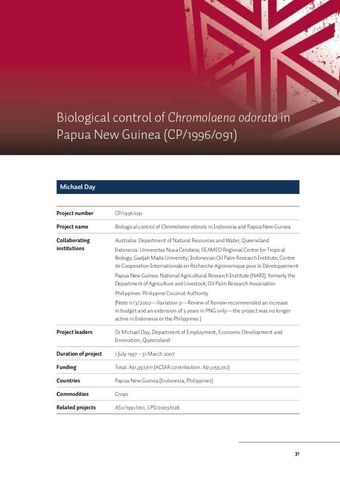Prioritisation of targets for biological control of weeds on Pacific Islands
- Description:
- Invasive weeds are one of the most serious threats to biodiversity and sustainable development in the Pacific region. Biocontrol is likely to be the only feasible way of managing many widespread weeds, but is not always appropriate or successful. With so many weed species to tackle and inevitably limited resources, prioritising where to direct control efforts most effectively is of key importance. Landcare Research recently developed a framework for the Australian government that allows the best and worst weed targets for biocontrol to be identified. Critical Ecosystem Partnership Fund and USDA Forest Service International Programs funding enabled this framework to be applied to weeds of the Pacific region.
- Display date:
- 2010
- Collections:
- Secretariat of the Pacific Regional Environment Programme (SPREP)
- Publisher:
- Landcare Research
- Content partner:
- Secretariat of the Pacific Regional Environment Programme (SPREP)
- Availability:
- Not specified
-
Copyright status: All rights reservedFind out more about what you are able to do with this itemThis item is all rights reserved, with means you'll have to get permission from Secretariat of the Pacific Regional Environment Programme (SPREP) before using it. For more information, please see our use and reuse page.What can I do with this item?Non-infringing useNZ copyright law does not prevent every use of a copyright work, and this item may be hosted by an international institute or organisation. You should consider what you can and cannot do with a copyright work.No sharingYou may not copy and/or share this item with others without further permission. This includes posting it on your blog, using it in a presentation, or any other public use.No modifyingYou are not allowed to adapt or remix this item into any other works.No commercial useYou may not use this item commercially.
Related items
Welcome and warm Pasifik greetings
The information on this site has been gathered from our content partners.
The names, terms, and labels that we present on the site may contain images or voices of deceased persons and may also reflect the bias, norms, and perspective of the period of time in which they were created. We accept that these may not be appropriate today.
If you have any concerns or questions about an item, please contact us.



